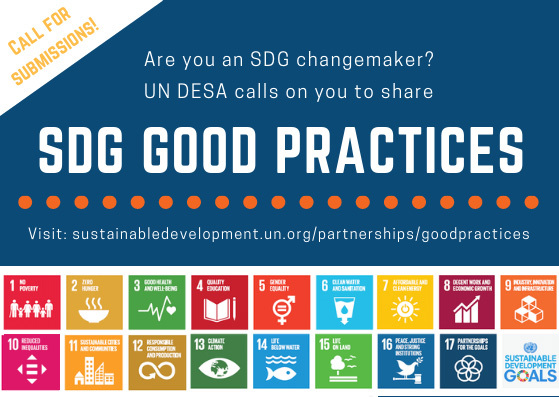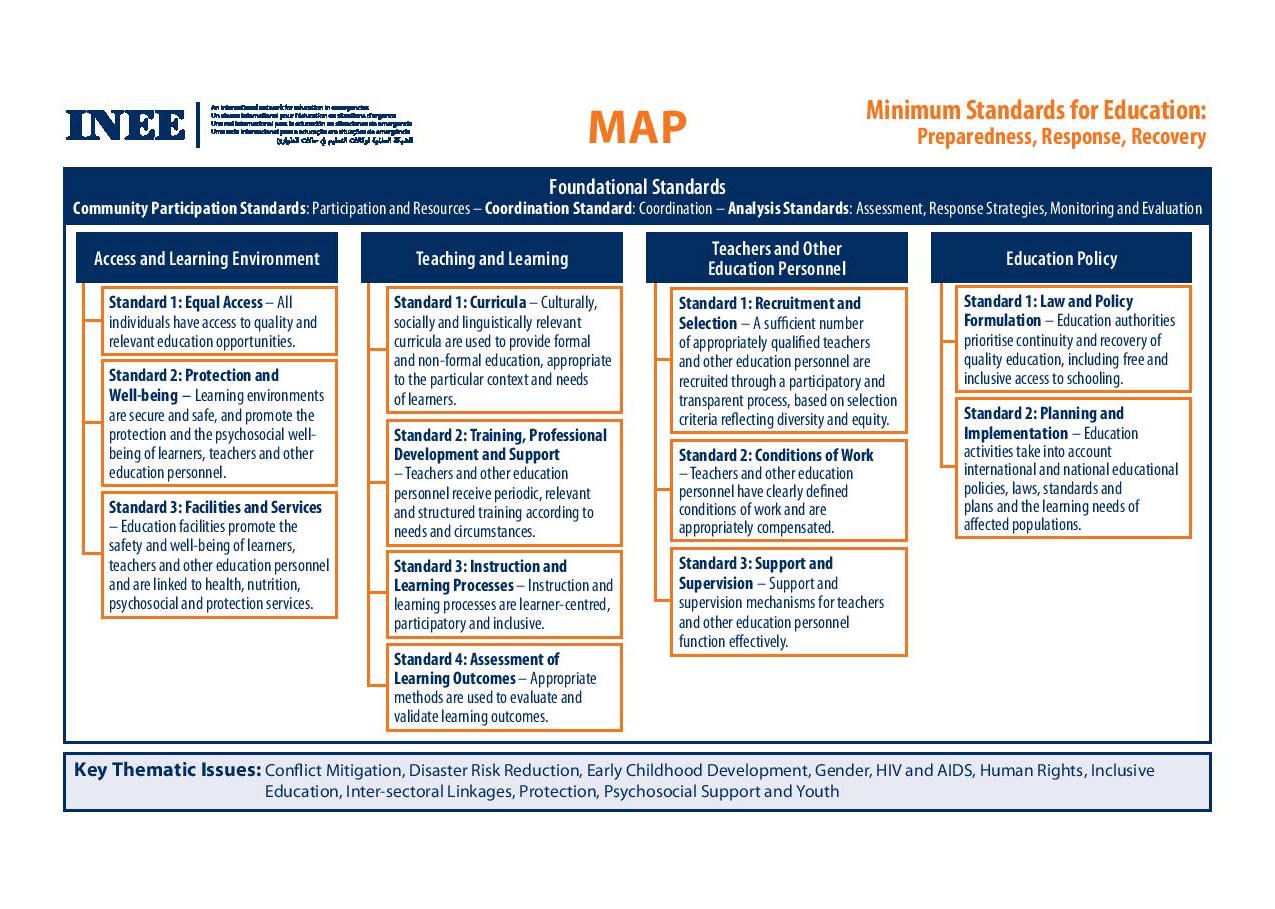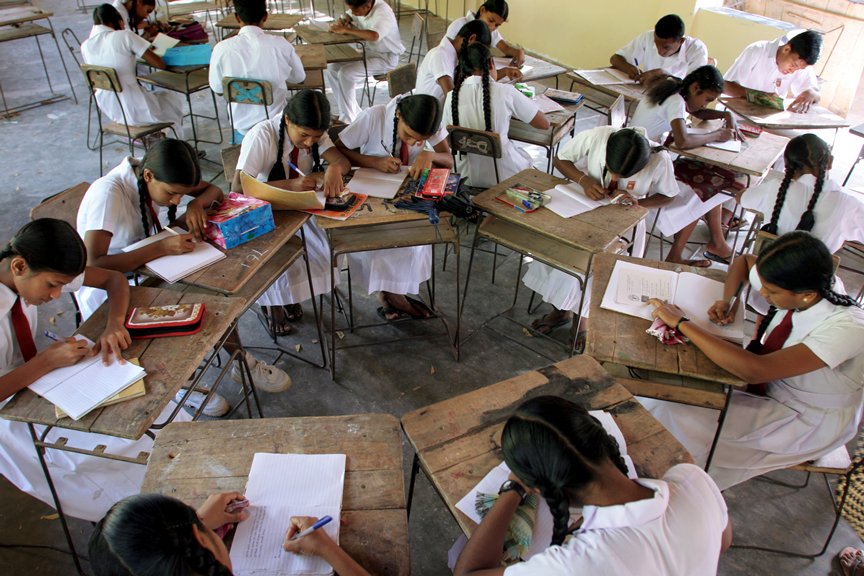Reaching SDG4 through the use of global standards for education in emergency, thereby bridging the humanitarian-development nexus
Description
In adopting the SDGs, governments pledged to deliver inclusive and quality education for all by 2030. However, this goal cannot be reached without paying attention to inclusive and quality education for children affected by emergencies. Recognizing that the formation of resilient and peaceful societies requires an integrated approach, the Inter-Agency Network for Education in Emergencies (INEE) urges the international community to discover and learn how to use the INEE Minimum Standards (INEE MS) which ensure that the delivery of education in emergencies is inclusive, safe, and conflict and gender-sensitive, thereby accelerating progress towards SDG4, and the many other inter-connected SDGs.
Standing by while the education of millions of children and youth is cut short by conflict and emergencies is not only a lack of fulfilment of their most basic human rights, it is a disaster for the individual, the family, the community, and society in the long run. To realize SDG4 and contribute to the 16 other SDGs on the 2030 Agenda, it is important that the access to, and the quality of, education is sustainably addressed across the world, crisis-affected contexts included. Hence, it is vital that a shared blueprint of guidance is on offer for the achievement of quality and inclusive education for all. The INEE MS, through delineating the goals for access to quality education in universal terms, is such a blueprint and provide a framework of good practice for all stakeholders to help achieve quality education. <br />
<br />
Take for instance INEE MS standard 8 (Domain 2: Access and Learning). This standard aims to help remove discriminatory barriers to education, provide equal access to learning opportunities for all crisis-affected children, and equip the most marginalized with the necessary skills and knowledge to be able to access economic opportunities and secure a decent livelihood when they grow up. As UNESCO highlights, 171 million people could be lifted out of poverty if all students in low-income countries left school with basic reading skills. INEE MS 8, with its focus on discrimination, is a powerful and effective tool to ensure inclusive education, hereby facilitating more equally gendered power structures (SDG5) - addressing in particular targets 5.1, 5.2, 5.3 and 5.4 - and building the resilience of the poor and those in vulnerable situations - target 1.5. Along similar lines, INEE MS standard 10 (‘Facilities and Services’, domain 2), by promoting linkages between education and nutrition services to address hunger and other barriers to effective learning and development, helps eliminating hunger. This thereby supports the realization of SDG2, in particular targets 2.2 and 2.1 which aim for access by all people, in particular the poor and people in vulnerable situations, to safe, nutritious and sufficient food all year round. Moreover, INEE MS 10 promotes the extension of healthcare services to conflict-affected children through education. As such, education enables faster progress towards SDG3, addressing in particular targets 3.1, 3.4, 3.7 and 3.D. In addition, studies confirm that better educated people are much less vulnerable to health risks and it has been demonstrated that four million child deaths have been prevented over the past four decades due to the global increase in girls’ education.
INEE believes that education is an essential and life-saving intervention during humanitarian crises and hence developed the INEE MS for use in a range of situations as a tool for quality and accountability within crisis responses, including disasters caused by natural hazards and conflict, slow- and rapid-onset situations, climate-related disasters, and emergencies in rural and urban environments. While education is not a part of the Sphere framework, the INEE MS use the Sphere approach as a model for ensuring education in humanitarian interventions, enhance levels of quality, access and accountability within emergency education programming, and secure increased funding for the education in emergency sector. INEE facilitates an ongoing consultative process that has so far engaged more than 2000 practitioners, policy-makers, academics and other educators around the world to design the INEE MS. Like the Sphere Standards, the INEE MS reflect the principles articulated in the Universal Declaration of Human Rights (1948), and the Conventions Relating to the Status of Refugees (1951), on the Rights of the Child (1989) and on the Rights of Persons with Disability (2006), as well as the United Nations General Assembly Resolution on the Right to Education in Emergency Situations (2010).
The 19 INEE standards define the goals for access to quality education in universal terms and offer guidance on how to prepare for and respond to acute emergencies in ways that reduce risk, improve future preparedness and lay a foundation for quality education. The 19 standards, divided into 5 domains, are brought to life by (1) key actions, which represent the steps that are needed to achieve each standard, and (2) guidance notes that illustrate specific points of good practice to consider when applying the minimum standards. Because each country context is different, the INEE standards are generic and reflect a common standard of achievement, yet should be customized to be relevant to a country’s local political and socio-economic reality, challenges, needs and available resources. They provide flexibility in responding to needs at the most important level – the community – while providing a harmonized framework to coordinate the educational activities of national governments, other authorities, funding agencies, and national and international agencies. Moreover, to facilitate the contextualization process, INEE provides translated versions of the 2010 edition of the INEE Minimum Standards in English, Arabic, Azerbaijani, Bahasa Indonesia, Bosnian/Croatian/Serbian, Burmese, Chinese, Dari, French, Japanese, Kyrgyz, Nepali, Pashto, Portuguese, Russian, Spanish, Turkish, Urdu, Vietnamese and additional translations in Nepali and Creole are underway. Additionally, INEE has developed tools to further support government agencies in institutionalization of the INEE MS. Only through an ultimately institutionalized application of the INEE MS can states and other duty-bearers contribute effectively and sustainably to meeting the complex needs, extending beyond education, of the most marginalized, and ensure faster progress towards all SDGs. INEE’s Standards and Practice Working Group (SPWG) monitors and oversees the implementations of the INEE MS and leads INEE’s efforts to support and develop contextualized innovative strategies and capacities within the field of education in different settings.
As reflected in the SDG Voluntary National Review (VNR), presented by Sri Lanka at the July 2018 High-level Political Forum, despite its recent crises that severely impacted the education of children and youth, Sri Lanka has made great progress in reaching SDG4 and many other SDGs. Some of this may be traced back to the actions of the Ministry of Education, Save the Children and UNICEF’s Country Office, who in partnership with INEE, offered technical assistance to strengthen the contextualization and application of INEE minimum standards at the national, regional and community school levels across the country. A collaboration between INEE and the Government of Sri Lanka contributed to better prediction, prevention and preparedness for emergencies through education contingency planning and to a roll-out of INEE trainings to government partners at national and district levels, targeting especially school-level participation. Subsequent monitoring and evaluation have shown that the application of the INEE MS has contributed to three major gains: (1) education continues to be accessible to all children, even in transit camps, and that enrolment has been satisfactory for both boys and girls, (2) community support and participation in education remain strong, and (3) teachers are able to identify students in need for psychosocial services and these have come to be better addressed, tentatively at first but more effectively in the years following, by government and humanitarian agencies alike. A significant number of the INEE standards has been institutionalized in Sri Lanka and now offer sustained guidance in responding to crises in education; this significantly supported the Sri Lankan education sector which came through its recent major crises, with its educational infrastructure and attainments largely intact. The result of the education sector’s focus on resilience, peace and socio-economic development can be seen in Sri Lanka’s impressive achievements at the national level in primary-school enrolment, literacy levels (SDG4), gender parity (SDG5) and peace building (SDG16).
Despite the overwhelming evidence of the myriad benefits of education to individuals, families, and societies in emergency, a number of factors are obstructing the facilitation of inclusive and quality education during emergencies (and hence for reaching the 2030 SDGs):
1. Lack of prioritization: Despite being prioritized by children, youth and their families, education in emergencies is sometimes neglected in immediate responses. Education is not yet seen as a basic relief alongside food, water, shelter, emergency assistance..
2. Poor coordination: In some cases, there is a lack of coordination, planning and financing models between humanitarian and development agencies who may both provide education.
3. Insufficient funding: Since 2010, less than 2% of humanitarian funding has been spent on education, though the $8.5 billion needed annually to close this gap makes for a much larger percentage
4. Inadequate capacity: Efforts to build capacity has greatly improved but is not yet matching the needs, thus potentially undermining the preparedness, predictability and timeliness of crisis response.
5. Lack of real-time data: Limited analysis and ineffective use of data makes it difficult to seek funding, build systems and communicate priorities and needs.
6. Despite efforts such as Sphere and INEE, and the existence of the cluster response system, there still is a lack in the standardization of assessment and response to educational needs in crisis situations and hence a sometime ad hoc mechanism to determine which agency or organization should respond.
Conflict and natural disasters deny generations the knowledge and opportunities that an education can provide. Education is not only a right protected by legal and human rights frameworks, but in situations of emergency, chronic crises and early recovery, it provides physical, psychosocial and cognitive protection that can be both life sustaining and life saving. The INEE Minimum Standards, through offering a tool for humanitarian agencies, governments and local populations to enhance the effectiveness and quality of their educational assistance, make a significant difference in the lives of people affected by crisis or disaster. The INEE MS handbook contributes by ensuring that the delivery of education in emergencies is inclusive, safe, and conflict and gender-sensitive and that education provides the knowledge and skills to survive in a crisis through the dissemination of life-saving information and facilities and services. As such, the INEE MS are not only the first step toward ensuring that education initiatives in emergency situations lay a solid and sound basis for post-conflict and disaster reconstruction, but also ignite progress towards SDG4, and the many other inter-connected development goals in the 2030 agenda.
(2) Sri Lanka Minimum Standards (http://s3.amazonaws.com/inee-assets/resources/MS_Contexualization_Sri_L…)
(3) INEE Minimum Standards Translations (www.ineesite.org/translations)
(4) The INEE Toolkit (https://toolkit.ineesite.org/overview_of_the_inee_toolkit)
SDGS & Targets
Deliverables & Timeline
Resources mobilized
Partnership Progress
| Name | Description |
|---|
Feedback
Action Network


Timeline
Entity
SDGs
Region
- Asia and Pacific
Photos



Website/More information
Countries
Contact Information
Bente Sandal-Aasen, Ms.
